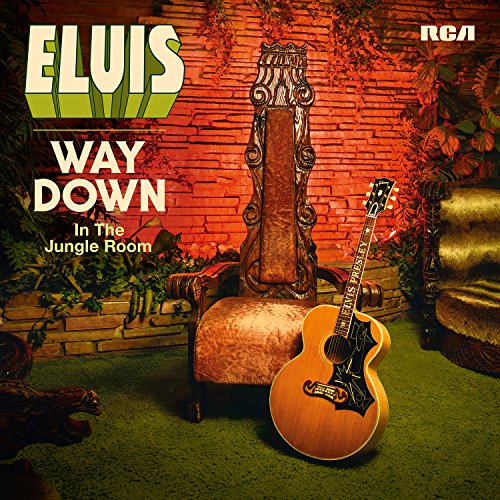
Elvis Presley
Way Down in the Jungle Room
Release Date: Aug 5, 2016
Genre(s): Pop/Rock, Rock & Roll
Record label: Sony Music
Music Critic Score
How the Music Critic Score works
Buy Way Down in the Jungle Room from Amazon
Album Review: Way Down in the Jungle Room by Elvis Presley
Very Good, Based on 5 Critics
Based on rating 4/5
By 1976, Elvis Presley was tired of squeezing in studio sessions between his rigorous touring schedule. Though his recordings had long failed to have any relevance for cutting-edge rock fans, his showing on country and adult contemporary charts meant that there was a constant thirst for new material. And, as both American Sound Studios and Stax were bothdefunct, options for recording in Memphis were fewer and further between.
Based on rating 7/10
In 1976, Elvis Presley was in an unusual position -- he was still the King of Rock & Roll and could sell out arenas all across the nation, but Top 40 radio played him only as an oldies act, and his new material popped up on the Easy Listening and Adult Contemporary charts when it charted at all. Tired of working in the studio where scheduling pressures stifled his creative spirit, Presley converted his den at his mansion Graceland into a recording studio with the help of RCA's mobile unit. Working with members of his top-notch road band, Presley recorded the sort of material he wanted to try -- songs that reflected his own maturity and that of his audience -- and the home-recorded sessions would become the basis for two albums, 1976's From Elvis Presley Boulevard, Memphis, Tennessee and 1977's Moody Blue.
Based on rating 7.0/10
Elvis Presley died on August 16, 1977, about a month after he released Moody Blue. Like so many Elvis records before it, Moody Blue wasn’t assembled with care: it indiscriminately blended new studio sides with live tracks, some dating as far back as 1974. Early in Presley’s career, his manager Colonel Tom Parker—the huckster who took Presley under his wing in ’56—realized there wasn't much of a margin in art.
Based on rating 7/10
Has there ever been an artist who catalog has been as purloined, chopped, reshuffled and repackaged as Elvis Presley? From the glut of hastily assembled albums released in the wake of his untimely death at the age of 42 in August of 1977 to the seemingly endless stream of live recordings, greatest hits packages and remastered editions of his original albums, it seems everything Elvis ever laid to tape has seen the light of day in some way, shape or form. And while not all of it is worth pursuing—Having Fun with Elvis on Stage is certainly for completists only—much of his post-“comeback” output is far better than it has been falsely remembered within the broader scheme of popular culture. Painted as a bloated caricature of the heartthrob he had once been, the version of Elvis in the 1970s that exists within the collective cultural unconscious is an exaggerated parody of the truth.
Based on rating 3/5
With its shag carpeting, Polynesian flair and indoor waterfall, the "Jungle Room" in Elvis Presley's Graceland den epitomized the kitsch excess of the King's declining years. But once converted to a home studio in 1976, the verdant oasis became the unlikely birthplace of his final recordings. Way Down in the Jungle Room showcases 16 master takes released on the last two LPs of Presley's lifetime, a chance to eavesdrop on a troubled performer pulling himself together for a final sprint at artistry.
'Way Down in the Jungle Room'
is available now

